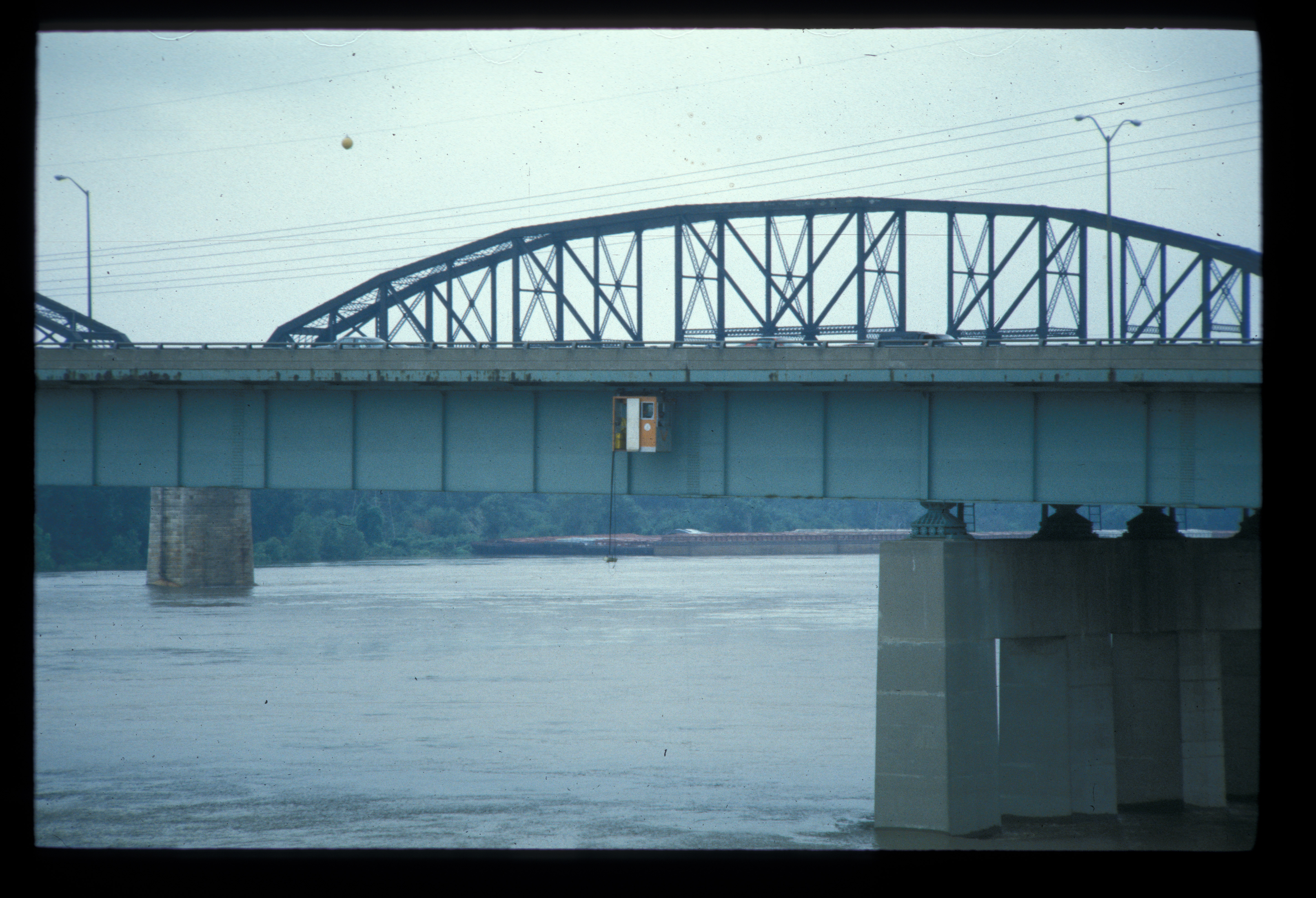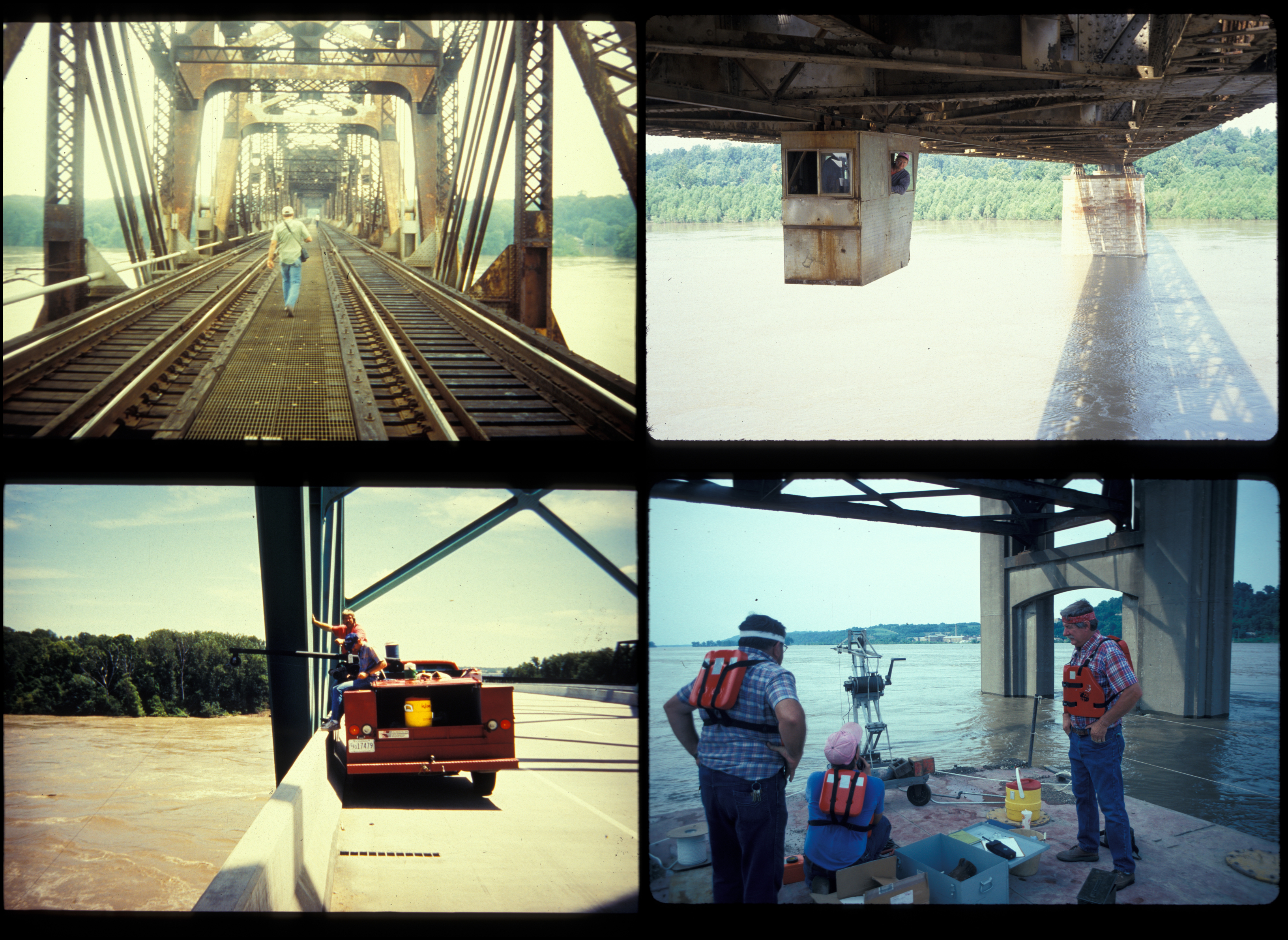Nearly every day in the summer of 1993, U.S. Geological Survey hydrologist Bob Holmes braved the high, tumultuous waters of the Missouri and Mississippi rivers to take measurements for river forecasts. Holmes will never forget how, in Cape Girardeau, he had to rescue electronic instruments used for calculating flow measurements.
Holmes and his crew needed to reach a shelter house built above the Mississippi River, which required climbing over a floodwall and wading through 3 feet water across the top of a catwalk. As they worked, Cape Girardeau firefighters watched them in case they needed to be rescued.
“They thought we were a little crazy for going out there,” Holmes said. “But you know, that was part of the job and we had to do it.”
With the rivers at record heights, Holmes was one of many scientists and engineers who were under incredible pressure to deliver river forecasts so riverside communities could decide how to protect themselves from one of the worst floods in history. The flood cost $15 billion in damages and killed 50 people.

Willie Easterling, of the U.S. Geological Survey St. Louis field office, operates an old monorail system on the Poplar Street Bridge in this July 10, 1993 photograph. The USGS scientists would lower a 300-pound weight from the monorail car into the Mississippi River to take measurements of depths and water current velocity. Each measurement could take 4 hours or more. When the flood crested in St. Louis on Aug. 1, 1993, the peak flow was 8.2 million gallons per second.
Photo provided by Bob Holmes
‘A monster flood’
Long, heavy rains caused river levels in Iowa, Illinois, Missouri and other parts of the Midwest to exceed the flood stage for several weeks. Scientists like Paul Osman, the flood program manager at the Illinois Department of Natural Resources, knew long before the crest that a major flood was on its way.
“It started with the heavy snow melt in the spring up north and then there was 40 days and nights of nonstop rain,” Osman said. “The peculiar thing about the '93 flood was that it grew very, very slow and stayed up for a long period of time. We had plenty of warning it was going to be a monster flood.”

Dave Busse was chief engineer at the U.S. Army Corps of Engineers’ St. Louis District during the Great Flood of '93.
David Kovaluk | St. Louis Public Radio
Upstream, parts of Iowa received several inches of rainfall. In early July, meteorologists reported that Dubuque had received nearly 11 inches of rain in one night.
“It rained so much in Iowa that a lot of people called it Iowa Lake,” said Dave Busse, chief engineer at the U.S. Army Corps of Engineers’ St. Louis District, “because that's all they had was water upon water upon water for a month.”
By mid-July, the flood levels around St. Louis rose past the record set in 1973.
“We were always doing the what-ifs,” Busse said. “What if this rain continues for another week? Where is it going to go? And that's kind of information that people doing the real work out there on the flood fight teams, the communities that are trying to protect their property and their lives, need to know.”
Hundreds of levees failed during the flood. That’s because long rains soaked many levees, causing them to become weak and unstable.
“Levees aren’t used to having water on them for that long,” Busse said. “By mid-July, almost every levee between St. Louis and Kansas City on the Missouri was gone. The water was already overtopped most of the levees on the Upper Miss were gone and overtopped.”

Top left: USGS hydrologist Mike Kleeschulte walks out to a gauge house on the Thebes Bridge near Cape Giradeau in this late-July, 1993 photo. During the Great Flood of '93, many railroad lines over the Mississippi River were flooded and much of the east-west rail traffic was diverted over the Thebes Bridge, according to USGS hydrologist Bob Holmes.
Top right: Holmes peers out the window of the monorail car under the Thebes Bridge in this late-July, 1993 photo.
Bottom left: USGS scientists in this late-July 1993 photo use a truck-mounted boom and winch to lower a 300-pound weight and water current meter into the Missouri River at St. Charles. Water velocities in this stretch of river were over 19 feet per second, similar to the velocity of a mountain stream, Holmes said.
Bottom right: Holmes (center) and two USGS hydrolic technicians ride a U.S. Army Corps of Engineers barge to Chester Bridge to take acoustic measurements of the river depths around the bridge's foundation in this July 26, 1993 photo.
Photos provided by Bob Holmes
An unforgettable flood
On Aug. 1, the Mississippi River at St. Louis crested at 49.58 feet, the highest ever recorded. But for scientists and engineers, the work to monitor receding waters and assess damages continued for several more months.
“It was stressful but we were having, I would say I had a really good time,” Holmes, the hydrologist, said. “I'm sorry to say that because people had homes damaged, lives lost, etc. But from a pure science and engineering standpoint, it sure was interesting.”
To Holmes, the flood was particularly significant because it marked one of his first professional tests. A few years earlier, he had graduated with a degree in civil engineering from the Missouri University of Science and Technology. The flood of '93 was his first major flood as a scientist.
“I saw the [Mississippi River] in a different manner and how big and how powerful it was,” Holmes said. “Since '93, I have measured and worked on and have been a part of investigations on a number of floods. And I’m continuing to be amazed at flooding and what it can do.”
Follow Eli on Twitter: @StoriesByEli

